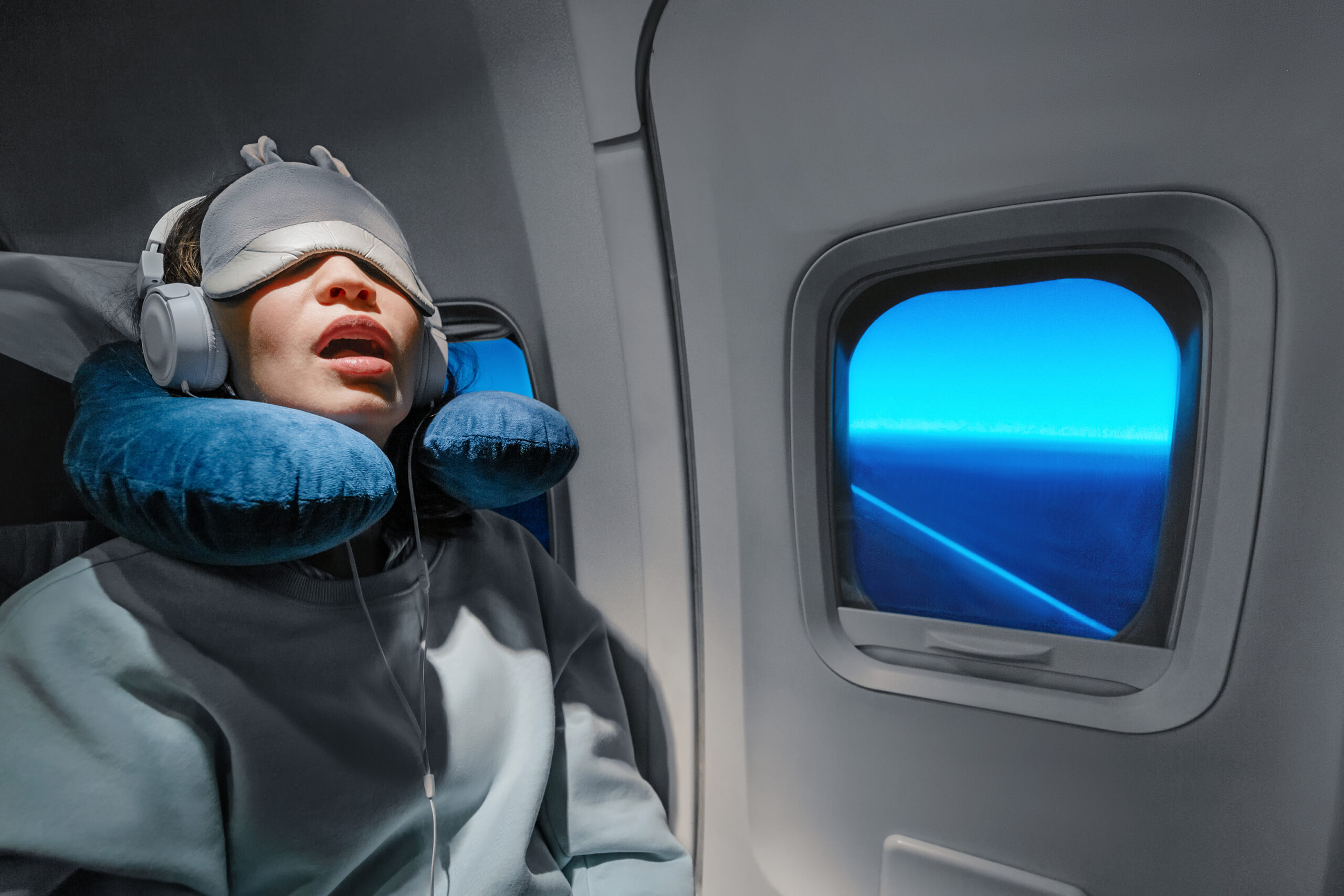Table of Contents

Jet lag disrupts millions of travelers each year, but science-backed strategies exist to reclaim your sleep and enjoy your travel destinations without the fog of fatigue.
At a Glance
- Jet lag occurs when travel across time zones disrupts your body's internal clock, with more severe symptoms typically experienced when flying eastward.
- Gradually shifting your sleep schedule before travel, maintaining hydration, and timing sunlight exposure can significantly reduce recovery time.
- Melatonin supplements may help reset your sleep cycle naturally without the side effects of prescription medications.
- Recovery typically takes about one day per time zone crossed, but can be shortened with proper preparation and post-arrival strategies.
Understanding Jet Lag's Impact on Your Body
Jet lag is more than just travel fatigue—it's a temporary sleep disorder that occurs when your body's internal clock conflicts with your destination's time zone. Symptoms typically include difficulty sleeping at night, daytime tiredness, poor concentration, and mood changes. These disruptions happen because your circadian rhythm, which regulates sleep-wake cycles, hormone release, and body temperature, becomes misaligned with external cues like sunlight and meal times in your new environment.
Eastward travel generally causes more severe jet lag than westward travel. This happens because flying east requires advancing your body clock, essentially forcing you to fall asleep earlier than normal—something our bodies naturally resist. According to Cleveland Clinic medical experts, "Researchers say that's because your body can adapt more quickly to staying up late than going to bed earlier than usual."
The severity of jet lag corresponds roughly to the number of time zones crossed, with recovery typically taking about one day per time zone. However, frequent travelers face potential long-term health consequences. Research published in the National Institutes of Health indicates that chronic jet lag may contribute to cognitive deficits, increased risk of cardiovascular disease, type II diabetes, and potentially even cancer.
Pre-Travel Preparation Strategies
Effective jet lag management begins days before your trip. Start gradually shifting your sleep schedule toward your destination's time zone. For eastward travel, go to bed and wake up 15-30 minutes earlier each day for several days before departure. For westward travel, do the opposite by staying up and waking later. This pre-adjustment gives your body a head start in adapting to the new time zone.
Technology can assist with this transition. Smartphone apps like Timeshifter and StopJetLag offer personalized schedules based on your travel itinerary, current sleep patterns, and chronotype. Some travelers also benefit from light therapy devices like the Lumos Smart Sleep Mask, which uses precisely timed light exposure to help adjust your internal clock before travel begins.
Every Saturday morning, I reflect on the last week over a nice double espresso.
And the most important question I ask:
What were my 5 biggest lessons & realizations?
Here’s my list for the week:
-----------
1. During times of emotional transition, it’s easy to default to… pic.twitter.com/1vYTNeTdgi
— Dickie Bush 🚢 (@dickiebush) July 1, 2023
In-Flight Strategies to Minimize Disruption
Your actions during travel significantly impact jet lag severity. Immediately after boarding, set your watch and devices to your destination's time zone to begin mentally adjusting. Stay well-hydrated by drinking water regularly, while avoiding alcohol and caffeine, which can disrupt sleep quality and dehydrate you further. The dry cabin air already increases dehydration risk, which exacerbates fatigue and jet lag symptoms.
For long flights, strategic sleeping can help. If arriving at your destination in the morning, try to sleep during the flight as if it were nighttime at your destination. Comfort accessories like eye masks, neck pillows, noise-canceling headphones, and even foot hammocks can improve sleep quality. Many experienced travelers recommend blocking blue light from screens several hours before attempting to sleep on the plane, as blue light suppresses melatonin production.
Post-Arrival Recovery Techniques
Strategic light exposure after arrival is perhaps the most powerful tool for resetting your body clock. For eastward travel, avoid morning sunlight and seek afternoon light. For westward travel, do the opposite. This approach helps regulate melatonin production, which controls your sleep-wake cycle. If natural sunlight isn't available, light therapy devices can provide similar benefits.
Melatonin supplements (typically 0.5-5mg) can help reset your sleep cycle when taken at the appropriate time. For eastward travel, take melatonin in the evening; for westward travel, take it before bedtime at your destination. While not FDA-approved specifically for jet lag in the U.S., many sleep specialists recommend it for temporary use. Morning exercise in your new location also helps establish proper circadian rhythm and improves sleep quality the following night.
Avoid long daytime naps, which can perpetuate jet lag. If you must nap, limit it to 20-30 minutes. Create a comfortable sleep environment with proper temperature, minimal light, and noise control. Many travelers find relaxation techniques like deep breathing or meditation helpful for combating insomnia in unfamiliar settings. If symptoms persist beyond a week or include fever, nausea, or other unusual symptoms, consult a healthcare provider.
Sources:
https://www.nationalgeographic.com/travel/article/overcome-jet-lag-with-expert-tips
AD
Most Recent
AD
